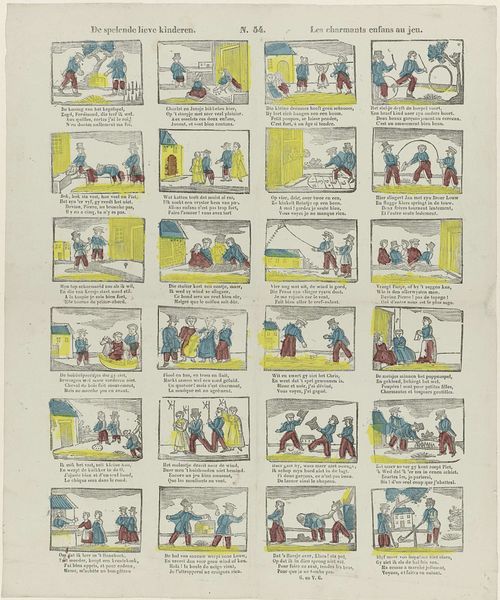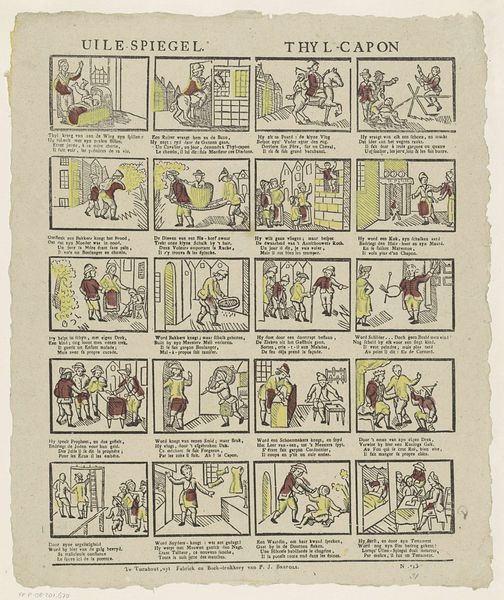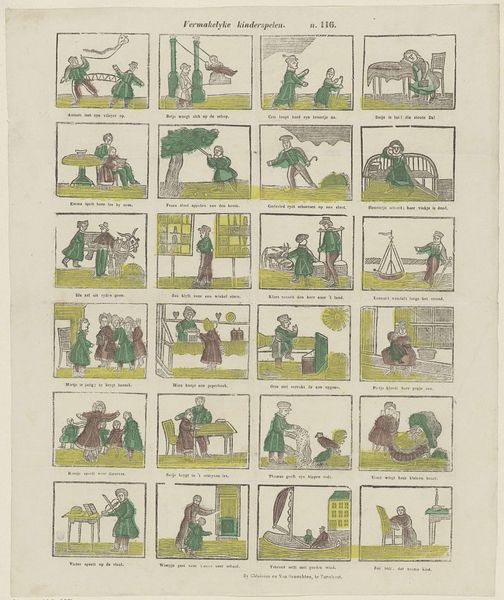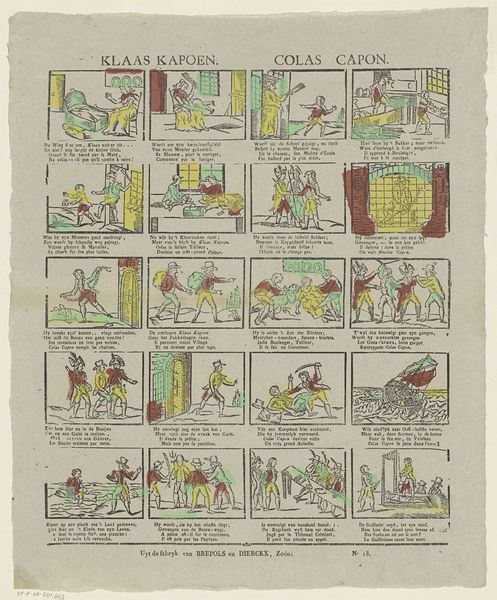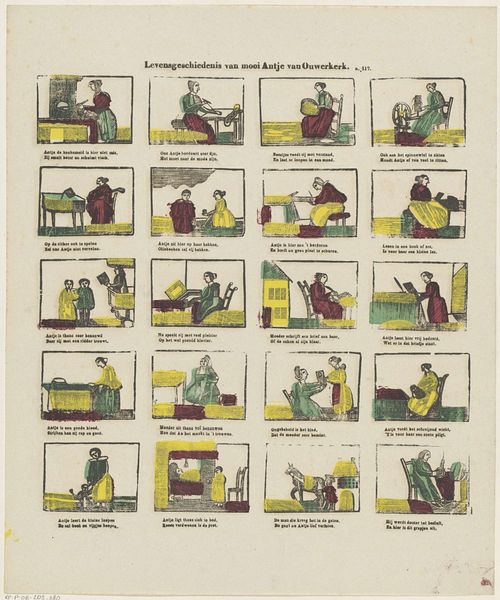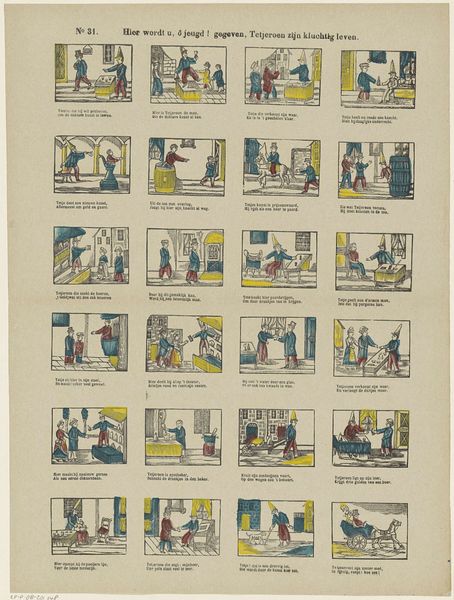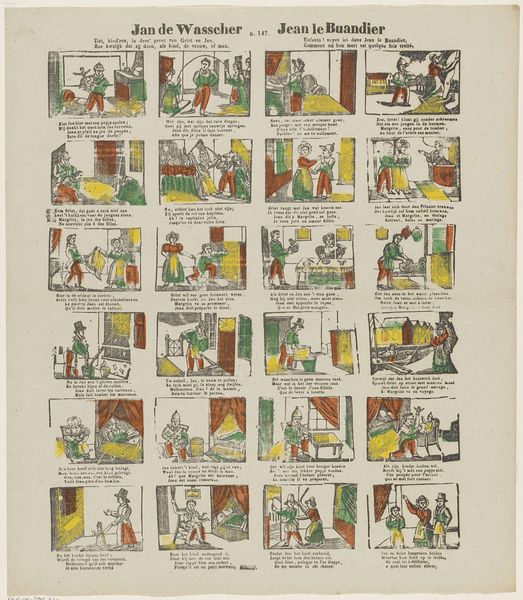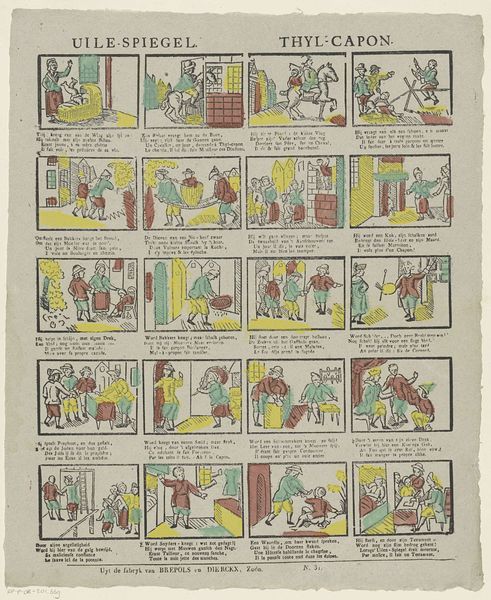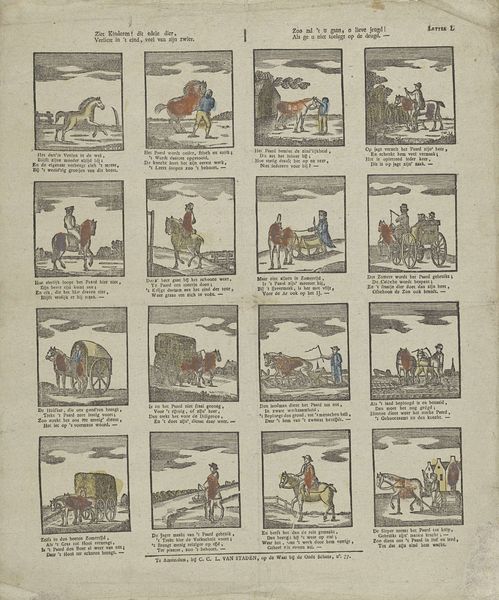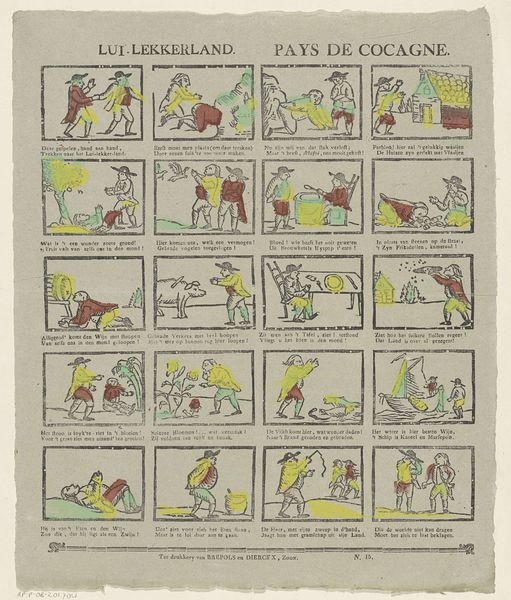
#
comic strip
# print
#
traditional media
#
retro 'vintage design
#
sketchwork
#
folk-art
#
comic
#
genre-painting
#
cartoon carciture
Dimensions: height 398 mm, width 294 mm
Copyright: Rijks Museum: Open Domain
Editor: This print, "Hier wordt u, ô jeugd! gegeven, / Tetjeroen zyn kluchtig leven", attributed to Glenisson & Zonen and dated between 1856 and 1900, strikes me as a series of lighthearted, almost cartoonish scenes. What's your interpretation of its purpose? Curator: This piece immediately evokes the tradition of chapbooks and popular prints meant for mass consumption. The sequential images and accompanying text work together, forming a kind of visual narrative that delivers a moral or social commentary. Think of it as a proto-comic strip. How do you think these narratives served a pedagogical function for its intended audience? Editor: So, each image contains a particular lesson or anecdote? I guess that makes sense, with the images grouped together to form some kind of cultural teaching. It reminds me of cautionary tales told to children! Curator: Precisely. Consider the title: it speaks directly to the "youth," suggesting that these comical "kluchten" - or farces - were meant to instruct. The clothing, the activities – these are visual shorthand for societal expectations and potential pitfalls. What do you observe about the repetition of characters or symbols across different scenes? Editor: Now that you mention it, the recurring green jacket worn by many figures, and the consistent compositions of certain scenes do create a familiar structure throughout. I suppose this helped reinforce the narrative as it unfolded? Curator: Exactly! This structure also implies a continuous cultural memory, reflecting values and fears circulated throughout society. Each of these panels functions as a miniature reflection of that larger cultural landscape. Understanding this repetition then allows a deeper dive into the symbols at hand, offering context and depth beyond simple didactic tales. What kind of feelings emerge as you piece together these interconnected visual stories? Editor: I hadn’t considered the cultural memory at play. It’s made me think more deeply about how such simple imagery can carry much heavier societal significance and that each choice wasn't simply illustrative but reinforcing cultural viewpoints, too. Curator: Indeed. And by extension it causes us to consider what endures in memory, and what gets overlooked or fades into the background. The simplicity belies a more complex and enduring message.
Comments
No comments
Be the first to comment and join the conversation on the ultimate creative platform.




